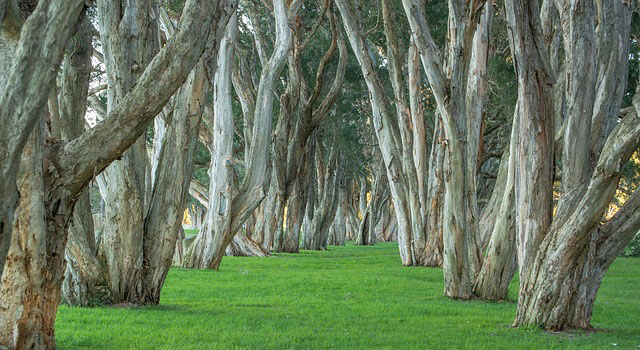Building up your ‘mortality muscles’
AUSTRALIA – The first ‘Festival of Death and Dying’ took place in Sydney with a goal of improving ‘death literacy’.
Nothing could evoke more gut-wrenching melancholy than Syrian musician Adnan Baraké playing the oud in a dimly lit boat shed at a festival of death. At least, that’s what I’m thinking right up until the moment a foghorn bellows ominously from some distant ocean liner, swamping us entirely in a sombre aura of doom.
It’s the opening ceremony at the inaugural Sydney Festival of Death and Dying – and it’s only going to get more macabre.
Held this past weekend, the festival was billed as three days of workshops, lectures, and performances that “do justice to the full spectrum of what is at stake in mortality”. Presented by Dr Peter Banki, he has compiled a line-up of peers such as anti-death-phobia advocate Stephen Jenkinson, designer of posthumous fashion Pia Interlandi, and president of Dying with Dignity NSW, Dr Sarah Edelman.
Together, they aim to illuminate all angles of death and dying: living with grief, dying at home, the afterlife, visions, suicide, and voluntary assisted dying, among others.
Nobody close to me has died, and my “death literacy” is lacking – I have a lot to gain from a weekend like this. In curatorial advisor Victoria Spence’s terms, I’m here to “build muscles in relation to mortality”.
Death is and perhaps always will be taboo, but it’s something we need a lot of help preparing for. Before we become a parent, we have months to get ready: we read books, we go to classes, we shop, we see a counsellor. When someone dies though, it’s often unexpected – but there are ways we can make the process easier, and they usually begin with a conversation. Or in this case, a festival.
Victoria Spence is a civil celebrant, consultant and former thespian. She begins her session – Developing Your Mortality Muscle – by explaining her objectives: to help us be aware of, and understand, our physiological responses to loss.
Death may cause us to fight, flee, freeze or submit, she says, but one response is pretty much guaranteed: shock. We react to death by abruptly drawing in breath; and in the rituals that surround death, we metaphorically hold it in. But if we’re prepared, if we learn to breathe, we can be properly present.
“When somebody dies, you put the kettle on,” she says. “That’s how you be with your dead.”
Having physical proximity with the deceased – being privy to their new smells, witnessing physical changes – activates a physiological response, changing the way we view our dead and encouraging the grieving process.
Next we’re given the chance to get up close and personal with the accoutrements of death. I slink into a satin-lined coffin, and as the lid is repositioned I imagine the sound of dirt raining down on me. This experience builds no bridge to death, the same way being wrapped in toilet paper for Halloween brings me no closer to the experience of mummification. But it does make me wonder about alternative burial rites.
Victoria says being physically intimate with death can be crucial: bathing your dead person, or clothing them. Another way to be intimate is through language. We sit in groups to exercise our vocabulary of condolence: “I’m sorry”, “You’ll get through this”, “You will heal in time” – my phrases seem to avoid the moment, while others engage with it: “How does her death make you feel?”
I’m not yet ready to yield to the vagaries of dying, whether real or imagined, by the festival’s end – but I do notice I’ve begun cultivating a relationship with death that I’m thankful for. Perhaps more importantly, I’ve also observed friendships forming, information exchanged, and future plans being made – the festival of death has facilitated the birth of a community. We are all dying, after all.


Leave a Comment
You must be logged in to post a comment.